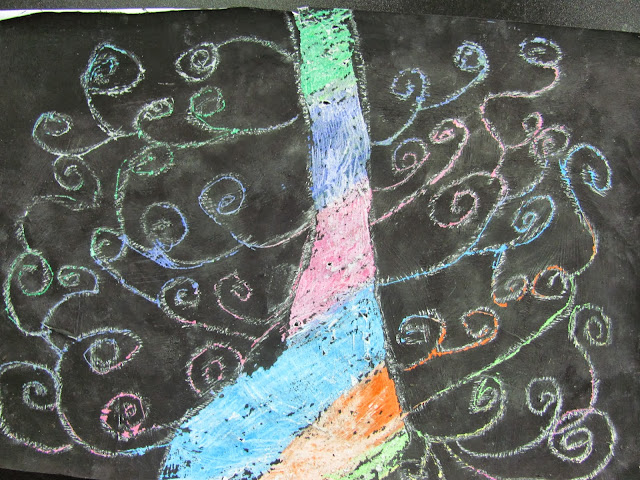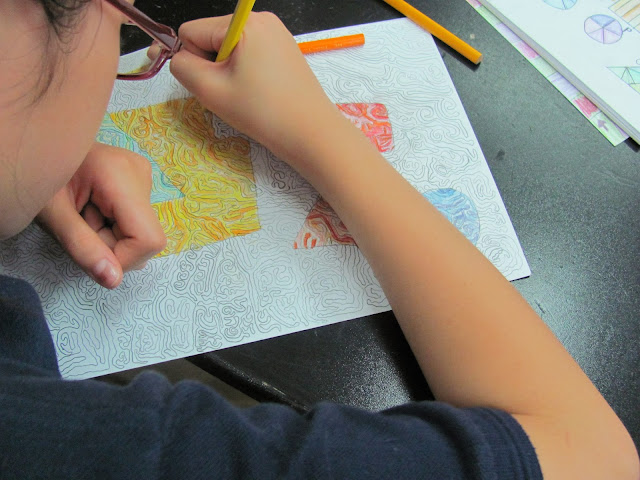Students used each of the six lines to cross the paper in some way. Once they used the six lines, they were free to add any additional lines that they wanted to. After the lines were complete, the students outlined their pencil with either black or colored marker ( student's choice ).
We then went through our designs, coloring all the new unique shapes created by the crossing lines. We did not cross any lines with our colors. This gave us some fantastic results. This project was a favorite of the students.








































